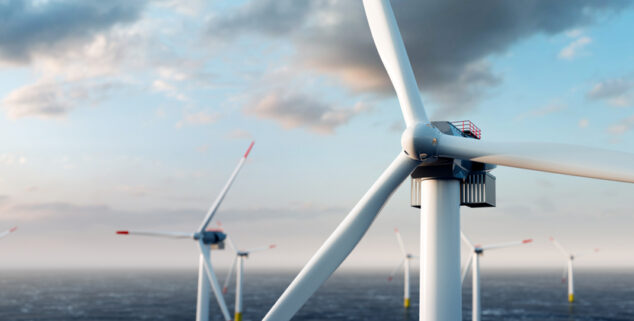Opinion
Thanks to Tribal partnerships, California can lead the world on offshore wind
 Image by PHOTOCREO Michal Bednarek via Shutterstock
Image by PHOTOCREO Michal Bednarek via ShutterstockOPINION – California is planning for offshore wind power at a scale unprecedented anywhere else on earth. Simultaneously, to ensure our proposed Chumash Heritage National Marine Sanctuary succeeds, I had to become an expert in wind energy.
My ancestors have cared for California’s Central Coast since time immemorial. As Chairwoman of the Northern Chumash Tribal Council, I am advancing decades of my family’s work advocating for the Chumash Heritage National Marine Sanctuary, which will protect 7,000 square miles of ocean spanning 156 miles of coastline. I never expected to become adept in wind energy – yet I recently found myself giving a keynote address at Offshore Wind California’s 2023 Pacific Offshore Wind Summit.
As we begin the defining year for our proposed marine sanctuary, the California Energy Commission is developing their initial offshore wind plan, due on June 30 for legislative review. Last year, the Biden administration conducted the Pacific Ocean’s first-ever offshore wind development lease sales. The proposed sanctuary and the “Morro Bay 399” offshore wind site will be neighbors at the sanctuary’s northwestern border, off the coast of Cambria. While offshore wind is cutting-edge, much more needs to be done for its responsible and equitable implementation.
Over the last decade, our Tribal Council has actively participated in offshore wind consultation. I am part of a delegation, with state officials, agency staff, and local stakeholders, that embarked on offshore wind fact-finding tours across the U.S. and Europe. These tours create connections with communities at the forefront of offshore wind development. We are applying their lessons learned as California pursues offshore wind at a scale many previously assumed impossible. This month, the Northern Chumash Tribal Council is co-hosting the group in San Luis Obispo to bring the conversation home to California’s Central Coast.
California is planning for offshore wind power at a scale unprecedented anywhere else on earth.
It is not the first nor the last time the Chumash will broach these conversations. Years ago, my dad, Fred Collins, attended offshore wind meetings at the Santa Ynez Reservation.
While he found the proposal far-fetched, he showed up to ensure our community’s voice was heard. Incredibly, it’s now happening – yet it’s still difficult to anticipate the impacts given the scale.
When my delegation visited Scotland to see existing wind development off the coast of Aberdeen, we toured five large floating wind turbines – only five. In California, we’re talking about nearly 1,700 turbines, each one as tall as a skyscraper, floating far offshore and tethered to the coastline with transmission cables that cross sacred Chumash sites – and leases that will last for decades.
There’s no other coastline like ours in the world, teeming with biodiversity, endangered species, and so many ocean users navigating delicate ecosystems. Offshore wind requires big changes, not only from the turbines themselves, but also from the need to retrofit ports and harbors and build massive ships for transport. For this reason, California needs extensive baseline and ongoing monitoring inside and near offshore wind sites. Tribes like mine are ready to step up when it comes to guiding scientific evaluation and are already doing so in the proposed marine sanctuary and wind farm sites. Without monitoring, we risk irreparable damage to our coastline, damaging our economy and environment.
The Biden administration has touted our marine sanctuary as a model effort and is expected to confirm its designation this summer. Fifteen U.S. lawmakers from California, including Senators Feinstein and Padilla and 12 other Congresspeople, just urged the federal government to finalize this soon. With clear momentum, we are eager to move forward too. We do not want the sanctuary’s success impeded by our clean energy neighbors perpetuating fossil fuel industry exploitation
Community benefits are key to ensuring offshore wind equitably uplifts local communities. Deals are now being negotiated with commercial fishermen to ensure offshore wind is compatible with fisheries. We, Native Peoples, have more than one interest. The Chumash people are at the intersection of taking care of our people, ocean, plants, and animals, all while balancing the need for clean energy, environmental protection, and a “blue economy.” We are the voice for our ocean and wildlife who deserve equitable protections too. We need culturally competent development, sustainable jobs, equity training, and other meaningful, enduring benefits. Our community has become all too accustomed to token gestures. Despite this, we continue to adamantly demand meaningful inclusion in leadership.
Past energy development “gold rushes” in California have harmed Native people and other people of color, but offshore wind must be different. The devil’s in the details, and we can’t afford to wreck our coast.
Violet Sage Walker serves as Chair of the Northern Chumash Tribal Council and Nominator of the proposed Chumash Heritage National Marine Sanctuary
Want to see more stories like this? Sign up for The Roundup, the free daily newsletter about California politics from the editors of Capitol Weekly. Stay up to date on the news you need to know.
Sign up below, then look for a confirmation email in your inbox.

Leave a Reply